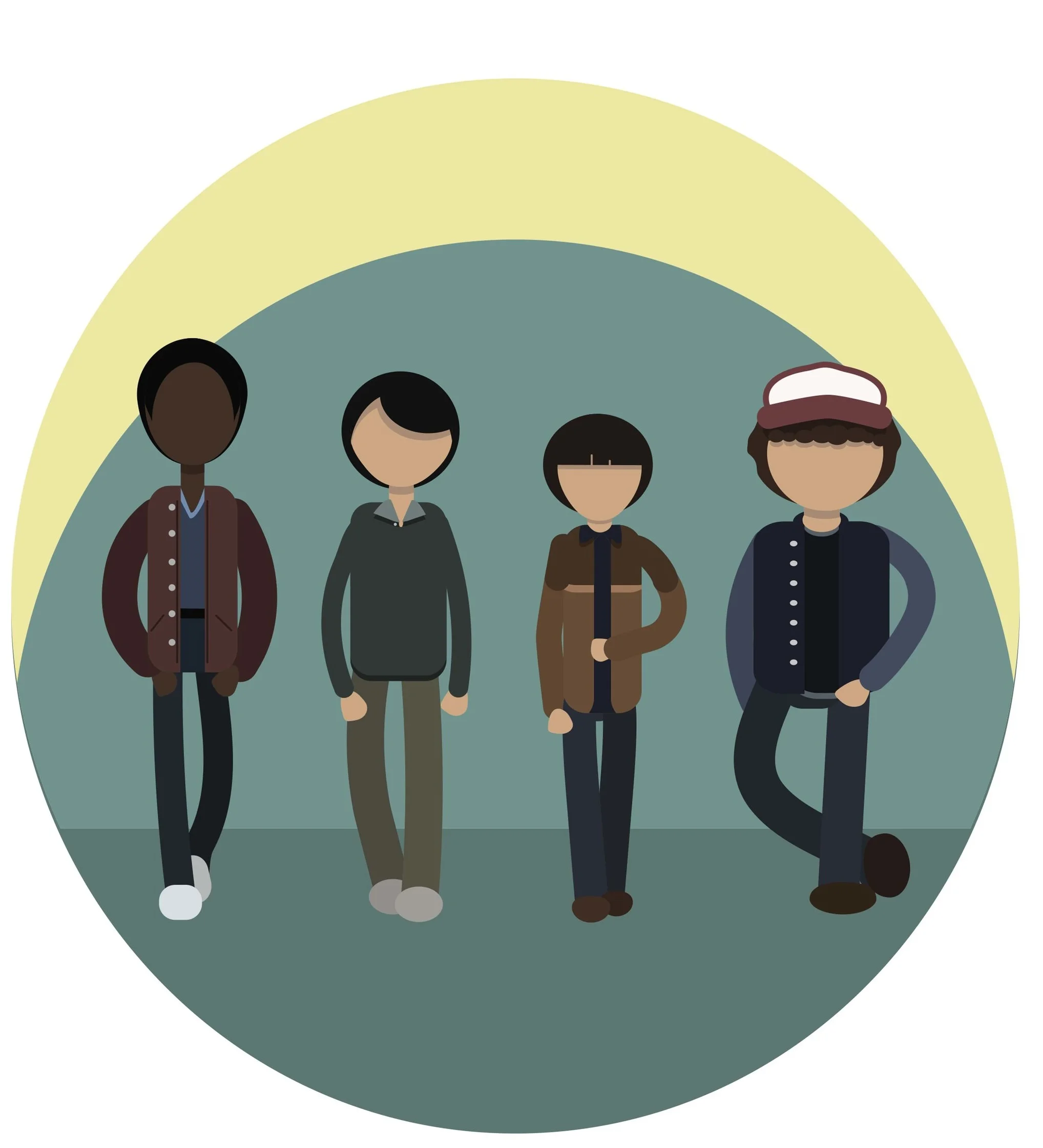Harness the Hype: Stranger Things 3
There’s something magical about content made in a different era. Nostalgic movies feel like time traveling - experiencing and connecting to an ambiance and feeling of a specific time or place.
Stranger Things, the retro sci-fi sensation on Netflix, immerses audiences in the 80’s throughout the show with it’s entire aesthetic, down to the soundtrack. The viewer is not only engaged by the captivating story, but by the presence of all things 80’s - but what can marketers take away from this pop culture phenomenon?
Nostalgia in Marketing
We are living in a world where people crave the past. Rocket Man, Yesterday, Bohemian Rhapsody - movies about historic musical legends were released this year to touch our hearts and bring us back to emotional, youthful times. And there is nothing younger generations love more than the eclectic eighties - a time of punk rock, fun, big hair, and, lest we forget, parachute pants.
Whether it’s their fear for the future, disdain for the present, or longing for the past, Generation Z and Millennials eat up nostalgia. Stranger Things does a phenomenal job catering to this need by sticking to their brand style: 80s. The poster, themes, clothing, and even ads selling Stranger Things themed toys have an old-fashioned look. These displays set the scene and create further hype.
Non-disruptive Product Placement
When the first season of Stranger Things exploded, a massive fandom was born. Just in time for Halloween and various fan conventions, many people dressed up as the show’s ever-powerful protagonist, Eleven. But no Eleven is complete without the familiar bright yellow box of Eggos.
Our Director of Marketing, Kate Jacoutot, dressed as Eleven (though she didn’t get the Eggo memo).
After years of irrelevance, Eggos’ feature in this captivating story rejuvenated the brand, increasing sales and social media mentions. Although there was not a paid agreement to feature the tasty frozen breakfast item, the sheer increase of sales created a brand partnership that Kellogg’s jumped onto.
Eggo is not the only product seen in the show, however. This year a new face is sneaking into several scenes…
That’s right. New Coke, the reformulated disaster of a product, is making its way back to the screen and select markets to celebrate the release of Stranger Things 3.
And, for the most part, viewers are okay with it. Even though New Coke flopped big time in its debut, it is a piece of a different era - and viewers of Stranger Things want to experience that.
One might ask, why would The Coca-Cola Company bring back a failed product? What does that do for their brand?
The answer is less about the product and more about what the product is associated with - nostalgia for a more simplistic time... and Stranger Things. On one hand, it’s a risky move to resurrect the carbonated disaster. On the other, it’s piggy-backing on the hype of one of the “biggest” show releases of the summer. Plus, why wouldn’t fans who love the 80’s deny tasting what’s known to be one of the worst product launches in the last three decades? Just think about all of the other mistakes people made in the 80’s. For Coca-Cola, this choice isn’t about pushing a failed product, it’s all about the experience and exposure!
Even the Duffer brothers, the directors of Stranger Things, released an ad in partnership with New Coke that played in theaters all of June 2019 - seamlessly integrating the product into the program without being invasive to viewers. This streaming-obsessed generation has become accustomed to disruptive advertising, so ironically, an advertisement in the right place caught viewers’ attention. Stranger Things may have partnerships with brands, but instead of forcing products down the consumer’s throat, the show’s partnerships create ads that are fun for consumers to watch and share.
Creative Partnerships
Although Netflix does not release viewing data, the success and following of Stranger Things is no mystery - especially with the first two seasons receiving around 600,000 unique mentions across social media platforms and blogs.
As Stranger Things’ popularity grows with its audience, so does its popularity with brands looking to harness the hype of the season 3 release.
Some companies were set up for tying their brand to the show’s release.
Last summer, Schwinn, a bicycle company, created a replica of Mike’s bike in preparation for season 2 - which sold out within days. This year, Schwinn released Lucas’ bike, complete with camo headband. Given that the kids are always riding retro bikes in the show, this was a perfect opportunity for a retro bicycle brand to launch a marketing campaign.
Other brands turned to show-inspired product lines.
Brands from across the spectrum of consumer goods created new, Stranger Things inspired product lines:
LEGO jumped on the opportunity to release The Upside Down Deluxe Playset
Reebok released themed high-tops to help customers evade lurking Demogorgons
Nike announced a collection of 1985-styled shoes
H&M and Target have dedicated resources to promoting 80s looks
Big Mouth, the company popular for pool floaties, sold a line of Stranger Things inflatables, complete with an Eleven waffle, Hawkins lifeguard cooler, and Demogorgon head - perfect for the summer release.
Some brands leveraged experiences to harness the hype of Stranger things.
But what about brands who don’t have sneakers or pool floaties to sell? Experiential marketing allows for users to engage with the brand in an organic and unforgettable manner.
Stranger Things partnered with multiple brands to immerse their fans into the show’s world. To promote the second season, Netflix partnered with the ride sharing app, Lyft, to connect with younger fans by creating a memorable experience as opposed to a traditional ad.
For the third season, Baskin-Robbins leveraged the hype of Stranger Things by creating an ice cream truck that replicates the version of the Scoops Ahoy Ice Cream parlor in the new season. Using Door Dash, consumers enjoyed Stranger Things-themed sundaes that were delivered right to their door.
Some brands tied themselves to the show without having to do much at all.
Food establishments seized the fandom opportunity to get creative with food items and campaigns. Burger King guised itself as “Stranger King” on Twitter, offering a limited edition “Upside Down Whopper” - which is just a normal Whopper prepared upside down as a shout out to the show’s parallel dimension.
Netflix has also done a remarkable job addressing hardcore fans of the show without undermining their appreciation. When pop-up bars appeared for fans to celebrate the show, Netflix responded by sending a humorous cease and desist letter - acknowledging the admiration and allowing their fans to have the experience while also letting them down easy.
When you think of a scary show about the unknown and the age of adolescence, pool floaties or burgers don’t typically come to mind. However, these marketers listened to their audiences and harnessed the hype by creatively integrating their product into a relevant campaign that supported the show. Stranger Things has people thinking not only upside down, but out of the box!
Stranger Things revealed to marketers all of the approaches possible when teaming up with partners, thinking outside of the box, and reaching younger audiences.
Looking for creative ways to spruce up your marketing efforts in order to reach younger crowds? Check out these blogs:














Over the past year, we’ve watched the following patterns emerge across seemingly unrelated sectors: rising consumer expectations, demand for authenticity, growing complexity, and the tension between automation and human connection.
We interviewed multiple marketers from an array of industries in our blogs below, and we discovered consistent trends across the board. Check out all of our industry blogs throughout 2025 from leaders at Blackbaud, Hiscox USA, Mimedx, MONPURE, Kimberly-Clark Professional, and more.